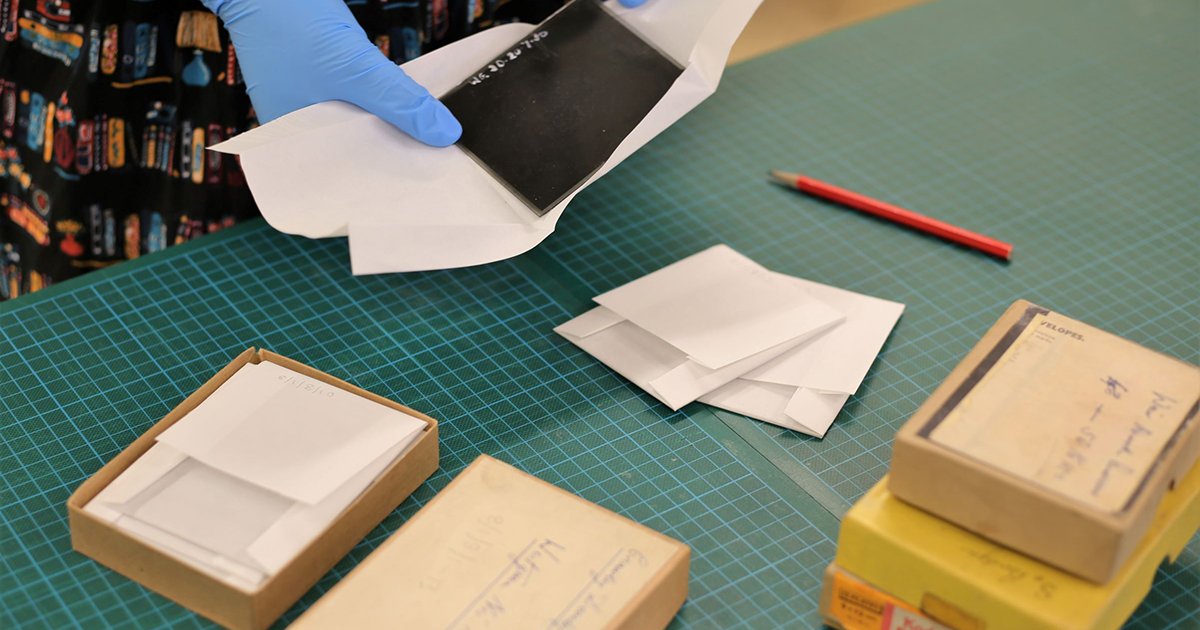
What the archivists are doing…
Before we begin, what is an archive?
An archive is a collection (or body) of historical, usually unique, documents which have a long-term research value. Archives are normally held in archival repositories; these repositories may also be referred to as ‘archives’ themselves.
Archives are kept by a wide range of institutions like local authorities (such as County Councils), universities, art galleries and museums, and businesses. Some repositories, such as local authority archive services, hold a wide variety of archives from a large number of different sources and creators.
Other repositories, as business archives, may be dedicated to a single subject or creator. Many of the partners in the New Jerusalems project are local authority record offices which are home to new town collections that include records such as minutes, correspondence, photographs and negatives, as well as maps and plans.
Records in an archive building are stored very carefully. Whatever their format, they must be kept in stable, dry and dark conditions which do not fluctuate. Many archive buildings have large storerooms in which the temperature and humidity are controlled. Keeping them in these conditions helps to ensure that they will be preserved for use by researchers.
So, what will the archivists be doing?
The role of an archivist is to collect, preserve and make accessible records (paper and digital) of long-term significance. The New Jerusalems project archivists have undertaken training to give them the skills to do this. In our case, the project archivists are working with paper-based documents from the mid to late 20th century.
Over the course of the project, many of the archivists will be undertaking a process called cataloguing. This involves listing the new towns records, arranging them into logical groups, assigning them a unique reference number, and repackaging items before they are stored.
One of the most important tasks for our project archivists is to describe each record with useful details which may include information such as the type of record, its date, and a summary of its content. This information will be made available through a searchable online catalogue.
Cataloguing creates a finding aid which helps researchers to access a collection and is distinct from digitisation (described in more detail below) which involves the creation of a digital copy of a record.
Other tasks the project archivists may be involved in is the creation of research guides which will provide information about how to access the records and use the catalogues, connecting with the general public to encourage use of these collections, and liaising with conservators to improve the condition of records and ensure they are correctly stored.
What is digitisation?
Some of the project archivists are working with photographs and negatives which are deteriorating and are too fragile to handle. This is where digitisation comes in. Digitisation involves creating a digital copy of a record, though scanning or photography, and storing it on a server or hard drive. Typically, two copies are made – an ‘access copy’ and a ‘preservation copy’. Once a digital surrogate has been produced, it can be used instead of the vulnerable record and means that the original is protected from further harm.
However, digitisation is time-consuming, so it isn’t normally possible for entire collections.
Why are archivists important?
Archivists play a crucial role in preserving cultural heritage and using their specific skillset in order to safeguard important records. Their work enables future generations to consult and learn from archival collections. The New Jerusalems project archivists will ensure that researchers can access and learn from new town records which document this pioneering era of urban planning.
Click on an image to enter town archive page


